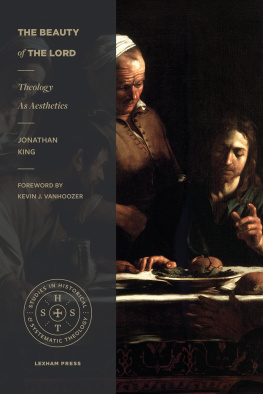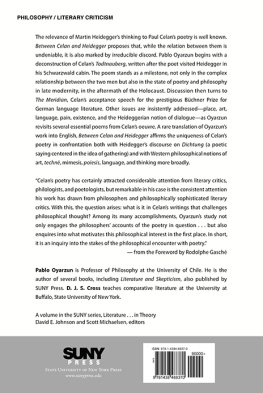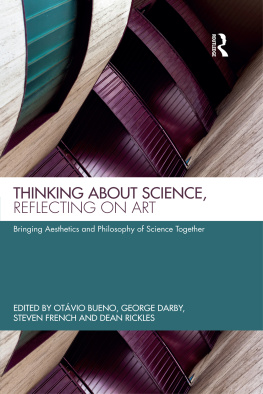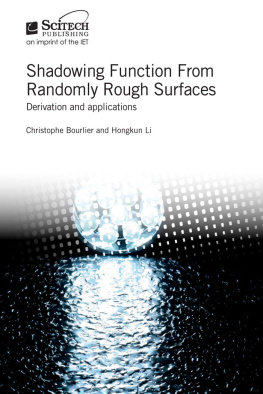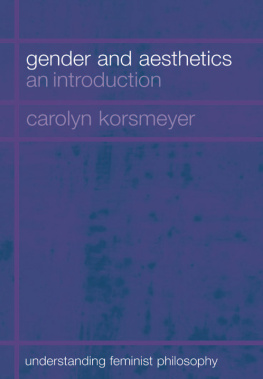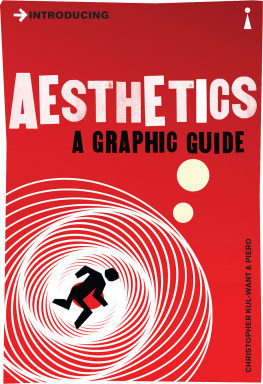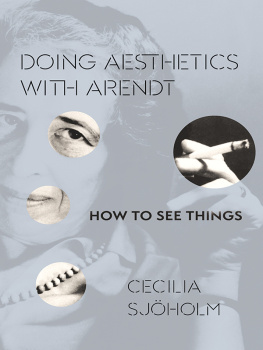Tuckwell - Creation and the function of art techne, poiesis and the problem of aesthetics
Here you can read online Tuckwell - Creation and the function of art techne, poiesis and the problem of aesthetics full text of the book (entire story) in english for free. Download pdf and epub, get meaning, cover and reviews about this ebook. City: London, year: 2018, publisher: Bloomsbury UK;Bloomsbury Academic, genre: Romance novel. Description of the work, (preface) as well as reviews are available. Best literature library LitArk.com created for fans of good reading and offers a wide selection of genres:
Romance novel
Science fiction
Adventure
Detective
Science
History
Home and family
Prose
Art
Politics
Computer
Non-fiction
Religion
Business
Children
Humor
Choose a favorite category and find really read worthwhile books. Enjoy immersion in the world of imagination, feel the emotions of the characters or learn something new for yourself, make an fascinating discovery.

- Book:Creation and the function of art techne, poiesis and the problem of aesthetics
- Author:
- Publisher:Bloomsbury UK;Bloomsbury Academic
- Genre:
- Year:2018
- City:London
- Rating:4 / 5
- Favourites:Add to favourites
- Your mark:
- 80
- 1
- 2
- 3
- 4
- 5
Creation and the function of art techne, poiesis and the problem of aesthetics: summary, description and annotation
We offer to read an annotation, description, summary or preface (depends on what the author of the book "Creation and the function of art techne, poiesis and the problem of aesthetics" wrote himself). If you haven't found the necessary information about the book — write in the comments, we will try to find it.
Tuckwell: author's other books
Who wrote Creation and the function of art techne, poiesis and the problem of aesthetics? Find out the surname, the name of the author of the book and a list of all author's works by series.
Creation and the function of art techne, poiesis and the problem of aesthetics — read online for free the complete book (whole text) full work
Below is the text of the book, divided by pages. System saving the place of the last page read, allows you to conveniently read the book "Creation and the function of art techne, poiesis and the problem of aesthetics" online for free, without having to search again every time where you left off. Put a bookmark, and you can go to the page where you finished reading at any time.
Font size:
Interval:
Bookmark:

Creation and the Function of Art
for Mum and Hayden
Also available from Bloomsbury
Aesthetic Theory, Theodor W. Adorno
Being and Event, Alain Badiou
The Bloomsbury Companion to Aesthetics, edited by Anna Christina Ribeiro
The Cultural Promise of the Aesthetic, Monique Roelofs
Deleuze and the History of Mathematics, Simon B. Duffy
Difference and Repetition, Gilles Deleuze
In the Beginning, She Was, Luce Irigaray
Intensive Science and Virtual Philosophy, Manuel DeLanda
Techne in Aristotles Ethics, Tom Angier
Creation and the Function of Art
Techn, Poiesis and the Problem of Aesthetics
Jason Tuckwell
Bloomsbury Academic
An imprint of Bloomsbury Publishing Plc

Contents
The completion of this book is a testament to the kind support of many people.
First and foremost an inexpressible gratitude to Anthony Uhlmann, without whose unwavering support, knowledge, generosity and encouragement this project would not have been possible. I am also particularly indebted to Ann Finnegan for early mentorship of the project. Many thanks to Diego Bubbio and Alex Ling who provided particular expertise and incisive criticism. I am also indebted to both Gregg Lambert for his early and generous support of the manuscript and Simon Duffy for his thoughtful feedback and suggestions. I thank Richard Garner for his patient and generous sharing of mathematical expertise. To my comrades James Gourley and Ben Denham, I owe particular thanks for friendship, encouragement and intellectual stimulation. I must also acknowledge my indebtedness to the experimental programme at UWS School of Fine Arts, where I forged a predilection for the problematic. I thank my family, Karen, Fred and Nicole, for their interest, generous support and unwavering encouragement. I also owe much gratitude to many other friends and colleagues whose varied and invaluable contributions are too numerous to list. I would additionally like to thank Andrew Wardell at Bloomsbury for his patience and professionalism in bringing the manuscript to publication, as well as James Tupper and the rest of the editorial staff. I would finally like to thank Christopher Connell for his incredible friendship and support in addition to a prolonged and stimulating exchange about the vagaries of artistic praxis.
In our contemporary moment, the orthodox understanding of art arguably comes to us via Platonism and a critique of its metaphysical assumptions. For art, this is to primarily address the poets exile from The Republic by challenging the authority of representation. This is to begin again upon the overturned judgement of mimesis, where art was degraded against the assumption of truths.
Yet, this does not assure a liberation of the power or function of art by a levelling of transcendence onto an immanent or abstract plane. While art variously acquires here new significance, this does not ensure it has been approached as a problem in its own right. More commonly, this is to amplify the uncertainty about art so that it exemplifies the degraded reality of the ideal and the simulated nature of being.
The following work pursues another approach, away from Platonism and the strategy of its overturning. This is to return to Aristotle in order to examine his alternative proposal for mimesis. For Aristotle, art is not a second order imitation, nor a wilful distortion of truths. Art is rather the power of the particular, the power most proximate to nature. Yet what this power imitates is no longer a form it is the action of phusis and the process bringing all to being.
Arguably, Aristotle does not simply propose an alternate mimetic theory, but a very different problematic approach to art. For Aristotle, art techn apprehends a complex problem or topos in which art, nature and creation were thought, together. Let us define the terms of this topos; it is the power to deviate cause from the self-propagating automaticity of phusis. This deviation is marked techn, which serves to indicate art and the distinction of human difference, together. More specifically, techn signals intelligence if not the broader capacity to sense. But that is not all for to deviate or change the direction of phusis requires a capacity to act. Techn is thus a kind of intelligence coupled to action, and the work thereby produced is art or poiesis.
Yet, for our contemporary understanding the terms of this topos are both very broad and specified in a way that has largely lost meaning arguably, this is because the problematic status of techn has become reduced to the series of solutions historically proposed to account for it. We speak of the work of art, but rarely does this evoke a specific accounting of praxis. As such, the problem of work seems largely reducible to what it produces; namely, the finished product or art object, prepared for its commercial or intellectual consumption. However, returning to techn and arts inaugural apprehension is to take up again those problems that have become delegitimized or otherwise abandoned. What is art? What is its relation to the decisive difference of human subjects from other natural beings? And do these broad, generic problems retain any relation to the field of art in its specific disciplinary contexts?
Let us address the fatigue with which this type of questioning is contemporaneously regarded. For this melding of the general and the particular evokes orthodox limits about the very nature of problems. We are told that where problems generate arrays of solutions with largely incompatible or incommensurable results, that this indicates the problem is poorly composed. Let us draw out the implicit principle here: problems are thought to be inherently tied to solutions, and so much so, that the value of a problem often concerns how well it anticipates its own resolution.
Yet, there is another way to think of problems: the problem remains irreducible to the series of solutions it produces. As such, there is no one-to-one correspondence between a problem and a solution. Rather problems are approached via their inherently productive and generative properties they create and disgorge differences. From this perspective there would be no corresponding solution to the problem of techn; to return to it as the problematic would rather constitute the attempt to comprehend its irreducibly creative power. This is not to reassert the rather glib platitude that art must be anything whatsoever it is to inquire whether it is an irreducibly generative activity that resists a definitive resolution, be it ontological, sensible, material or theoretical. And because techn problematizes art and human difference together, this questions whether the process of particularization constitutes a resolution into subjective being. That is to say, if techn concerns an irresolvable, generative activity, this calls into question whether any determinations about subjective beings also determines what kind of work they can perform.
In order to encounter the work of art on its own terms, the following discussion opens upon the nature of the problematic. This is to begin with Deleuzes characterization of two kinds of problems in philosophical inquiry. The first is the general form with which we are very familiar, in which all problems are coupled to solutions. But from this dominant form, Deleuze distinguishes a difference in kind: a separate sense of the
Font size:
Interval:
Bookmark:
Similar books «Creation and the function of art techne, poiesis and the problem of aesthetics»
Look at similar books to Creation and the function of art techne, poiesis and the problem of aesthetics. We have selected literature similar in name and meaning in the hope of providing readers with more options to find new, interesting, not yet read works.
Discussion, reviews of the book Creation and the function of art techne, poiesis and the problem of aesthetics and just readers' own opinions. Leave your comments, write what you think about the work, its meaning or the main characters. Specify what exactly you liked and what you didn't like, and why you think so.

